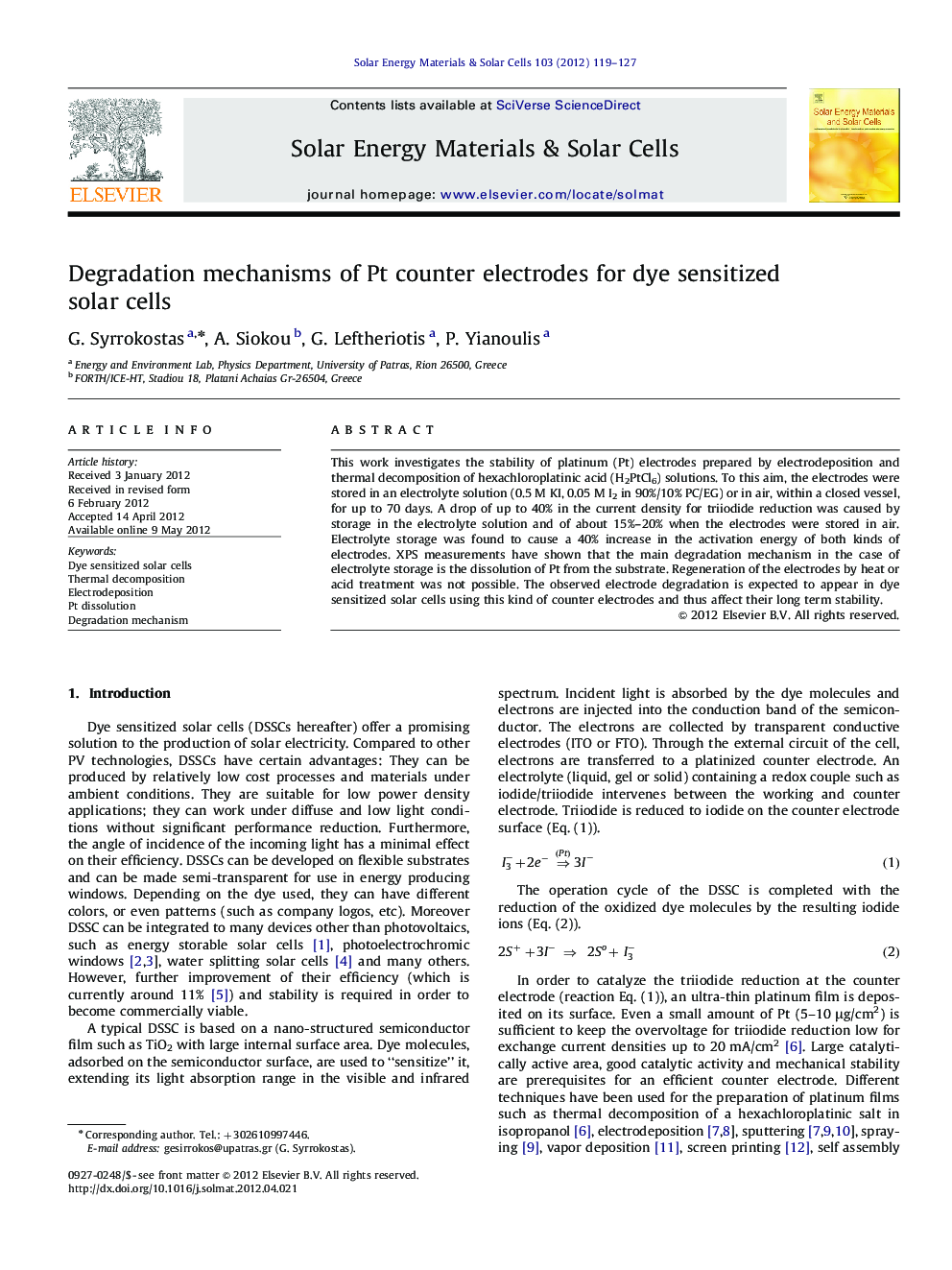| Article ID | Journal | Published Year | Pages | File Type |
|---|---|---|---|---|
| 79086 | Solar Energy Materials and Solar Cells | 2012 | 9 Pages |
This work investigates the stability of platinum (Pt) electrodes prepared by electrodeposition and thermal decomposition of hexachloroplatinic acid (H2PtCl6) solutions. To this aim, the electrodes were stored in an electrolyte solution (0.5 M KI, 0.05 M I2 in 90%/10% PC/EG) or in air, within a closed vessel, for up to 70 days. A drop of up to 40% in the current density for triiodide reduction was caused by storage in the electrolyte solution and of about 15%–20% when the electrodes were stored in air. Electrolyte storage was found to cause a 40% increase in the activation energy of both kinds of electrodes. XPS measurements have shown that the main degradation mechanism in the case of electrolyte storage is the dissolution of Pt from the substrate. Regeneration of the electrodes by heat or acid treatment was not possible. The observed electrode degradation is expected to appear in dye sensitized solar cells using this kind of counter electrodes and thus affect their long term stability.
Graphical Abstract(a) Atomic Iodine absorbed on Pt and (b) degradation. Pt-I pairs depart.Figure optionsDownload full-size imageDownload as PowerPoint slideHighlights► We investigate the stability of platinum (Pt) electrodes. ► The electrodes were stored in an electrolyte solution or in air for up to 70 days. ► A drop in the current density was caused by storage in the electrolyte solution. ► Platinum dissolution was the main degradation mechanism.
